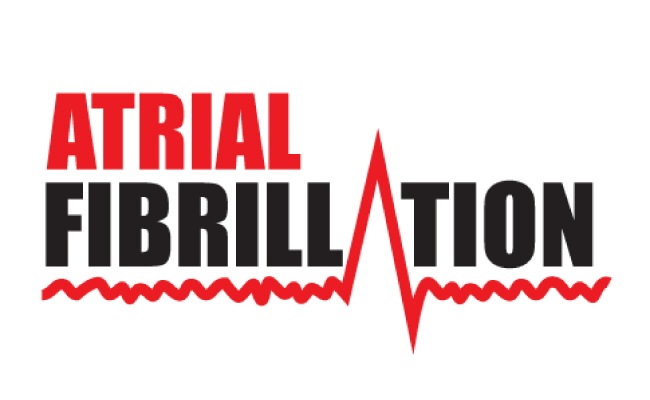
Treating atrial fibrillation with percutaneous closure of the left auricle
Preventing strokes due to thrombi forming inside the heart in patients with atrial fibrillation is the aim of percutaneous closure of the left auricle
This procedure is now a promising treatment option for patients who, for various reasons, cannot take anticoagulant therapy or are at high risk of bleeding.
Atrial fibrillation: the most common form of arrhythmia
Atrial fibrillation is the most common form of arrhythmia and represents an important risk factor for the occurrence of ischaemic stroke, i.e. due to the more or less complete obstruction, caused by an embolus, of an arterial vessel with consequent reduction in the supply of oxygenated blood to a given portion of the brain.
In particular, atrial fibrillation refers to an irregular and often accelerated heartbeat that originates in the upper cardiac chambers, the so-called atria, preventing them from functioning properly.
The consequence is that the atria are no longer able to expel all the blood, which thus remains partly inside the chambers with the risk of clots forming.
ອາການຂອງໂຣກ atrial fibrillation
Atrial fibrillation generally manifests itself with:
- palpitations
- feeling of the heart in the throat;
- irregular or abnormal heartbeat or heart murmur;
- ຈຸດອ່ອນ;
- ຫາຍໃຈຍາກ;
- ເຈັບເອິກ.
In some cases, however, it may be asymptomatic and give no signs of its presence.
ອຸປະກອນ ECG? ໄປຢ້ຽມຢາມປື້ມ ZOLL ຢູ່ທີ່ງານວາງສະແດງສຸກເສີນ
How to diagnose atrial fibrillation
The reference examination for diagnosis is the ECG (electrocardiogram).
Once the presence of atrial fibrillation has been detected, it is important to also perform a colordoppler echocardiogram to check for any structural heart disease.
The causes and risk factors of the disease
There are many different causes of atrial fibrillation:
- heart valve defects
- ຄວາມຜິດປົກກະຕິຂອງການເກີດຂອງຫົວໃຈ
- emphysema or other chronic respiratory diseases;
- exposure to stimulants such as drugs, tobacco, alcohol;
- ຄວາມລົ້ມເຫຼວຂອງຫົວໃຈ;
- ພະຍາດຫົວໃຈ ischemic;
- ຄວາມດັນເລືອດສູງ;
- hyperthyroidism or other metabolic imbalances;
- ນອນ apnoea;
- ການຕິດເຊື້ອໄວຣັດ.
In addition to these causes, the most important risk factor for arrhythmias is age.
Atrial fibrillation, treatment with percutaneous closure of the left auricle
In patients suffering from atrial fibrillation, it has been shown that in more than 90% of cases, thrombi originate in the left auricle, a kind of small sac that ‘hangs’ from the left atrium, one of the four cavities into which the heart is divided.
To reduce this risk, the most effective treatment is usually the long-term use of anticoagulant drugs.
However, in some patients, this therapy can be associated with significant side effects, such as bleeding in the brain and stomach, and can be difficult to manage or ineffective.
In these cases, closure of the left auricle is indicated, a minimally invasive procedure involving the insertion of a small prosthesis or mesh which, by closing the auricle, in a very high percentage of cases, around 90%, prevents the formation of thrombi even in the most compromised patients, precisely those who are most often unable to take anticoagulant therapy despite being at risk of stroke.
Thanks to multidisciplinary collaboration, the procedure is performed through a minimally invasive access under ultrasound guidance.
The stay in hospital is only one night and the patient can immediately resume normal activities once discharged.
ອ່ານຍັງ:
ມີຊີວິດສຸກເສີນຫຼາຍຂຶ້ນ…ສົດ: ດາວໂຫລດແອັບຟຣີໃໝ່ຂອງໜັງສືພິມຂອງເຈົ້າສຳລັບ IOS ແລະ Android
Paediatrics, ເຕັກນິກການ Ablation ໃໝ່ ສຳ ລັບ Tachycardia At The Bambino Gesùໃນ Rome
Tachycardia: ສິ່ງທີ່ ສຳ ຄັນທີ່ຕ້ອງເອົາໃຈໃສ່ໃນການຮັກສາ
Ablation of Re-entry Tachycardias ແມ່ນຫຍັງ?
Atrial Fibrillation Ablation: ມັນແມ່ນຫຍັງແລະວິທີການປິ່ນປົວມັນ



